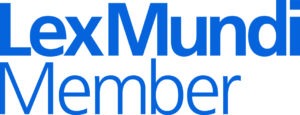When deciding how much to invest in their intellectual property rights, product manufacturers often ask, “What is a patent worth?” This is a reasonable question, given the costs required to obtain patent protection. But manufacturers need to understand that unless a product with high value and risk of being imitated is patent-protected, the product owner could lose potential profits by not possessing exclusive rights to the product. Investing in a patent will help protect you and your investors, and enable you to produce and sell your product, while preventing others from doing the same.
A patent is a limited monopoly right granted under the authority of the government, which will issue a patent for an invention that is a new, useful, and unobvious product or process, or an improvement on such an existing product or process. A patent lasts for 20 years from the date of application filing. The rights to a patent are granted in exchange for a complete and enabling disclosure or description of the best mode of implementing the invention.
Once you are granted a patent, it is the government’s obligation to prevent others from making, using, selling, or importing your invention. During this 20-year period, once the patent is approved and remains validly registered, you can go to court and obtain damages against any infringers of your patent, and in most circumstances, apply for an injunction to prevent ongoing infringement of your patent during the term of validity.
Valuing Your Patent
So what does this mean for the value of a patent? You may look at the profits that you currently earn on the sales of your product and ask yourself, “Would I lose my profits if I do not have a patent?” This lets you quantify, in monetary terms, what the patent may be worth. By reevaluating this amount each year for the remaining life of the patent, you will be able to generally determine the value of your patent.
A patent is necessary and has a value only when a product or process covered by the patent currently exists or will exist in the market. This concept also extends to improvements or upgrades to your invention, because if you do not obtain a patent for these items, then your competitor might. If they possess such a patent and you do not, then you may be unable to sell your improved or upgraded product or process in the future.
Licensing
When you own a patent, you can make the products protected by the patent and prevent others from doing so. But beyond this, you can also license or sell your patent, which further qualifies it as a valuable asset. For example, if someone were to make a claim for infringement against you, you could offer to cross-license your patent, or you could counterclaim or countersue based on your patent. In this instance, having multiple patents or building a patent portfolio can be a very profitable business model.
Valuation Methods
When you are looking to license or sell your patent, you will need to have a starting point for negotiations by determining the value of the patent. In general, you can assess the patent’s value in a couple of different ways—one of which is the “calculated value.” There are several different methodologies that you can employ to derive a calculated value, such as the cost method, market method, and income method, which are based on discounted cash flow. Then there are more sophisticated methodologies, such as the probability adjusted income method, Monte Carlo analysis, and binomial lattices and real options method. There is no shortage of methodologies that can be applied. These models allow a patent owner to draw an estimate of the value of the patent.
Another, less formal, method involves the “story” value. There can be either a good story behind a patented invention or an unattractive story. In discussions between a patent owner and any potential buyers, the story—or reasons behind why the owner is selling the patent—will have an effect on the ultimate value received for the patent from the buyer.
There is also the element of competition among potential buyers who wish to obtain your patent to consider. If several well-funded companies are competing to obtain your patent, or even if there is only one company that is highly motivated in acquiring it, then your patent obviously commands a high valuation.
As the patent owner, you may be a brilliant innovator, who has spent the past 20 years working very hard on an invention, which grew in value over time. But if you are a poor negotiator, you could destroy much of the value of your invention when you license your patent. Thus, savvy negotiating skills are key to maximize the desired amount of value you want from your patent.




